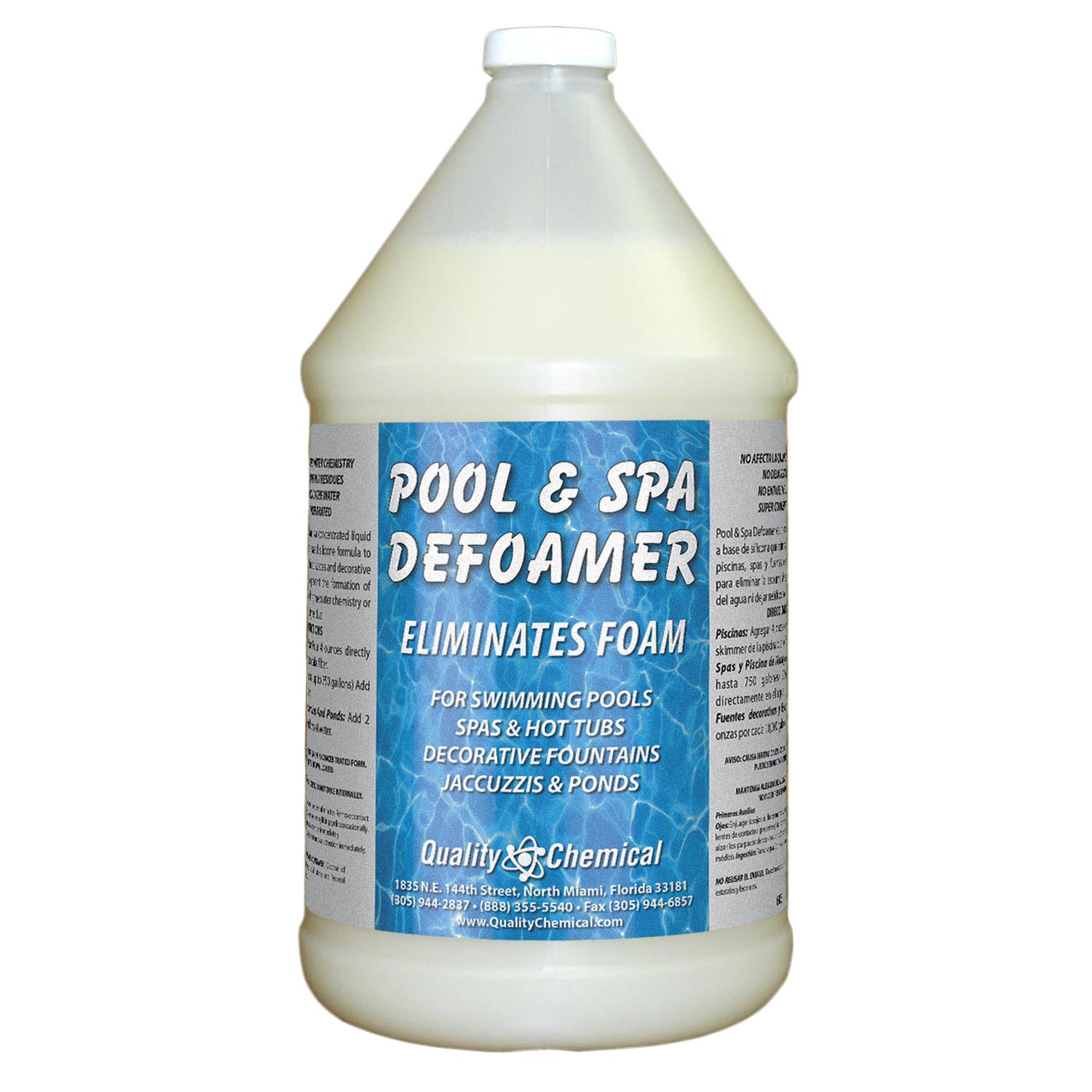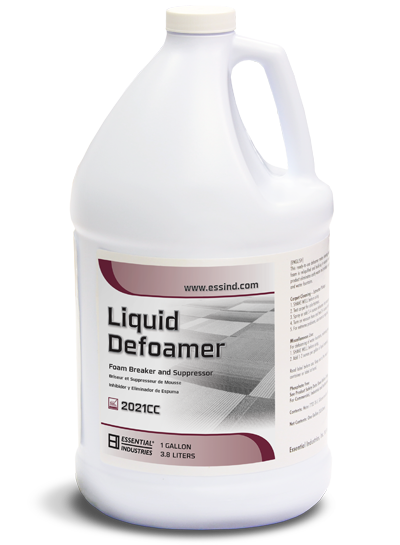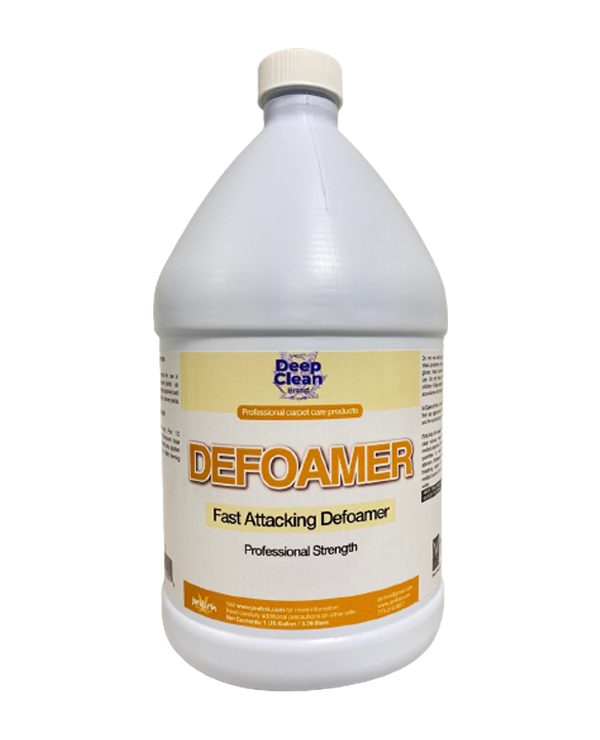Why a Good-Quality Chemical Defoamer Is Necessary for Sustaining Operational Performance
Why a Good-Quality Chemical Defoamer Is Necessary for Sustaining Operational Performance
Blog Article
Exactly How a Chemical Defoamer Can Boost Performance in Your Operations and Processes
In today's affordable commercial landscape, operational effectiveness is vital, and the duty of a chemical defoamer can not be neglected. By attending to foam-related obstacles that interfere with processes, defoamers not only assist in smoother procedures yet additionally contribute to cost savings and improved item top quality. Their influence spans various industries, making them a vital factor to consider for those wanting to maximize efficiency. However, comprehending the details advantages and applications of defoamers raises important questions about their choice and application. What variables should you take into consideration to optimize their performance in your procedures?
Recognizing Chemical Defoamers
Chemical defoamers play an essential role in various commercial processes by efficiently protecting against and minimizing foam formation. Foaming can bring about functional inefficiencies, increased manufacturing expenses, and compromised item high quality. Defoamers are specialized chemical additives made to interrupt the stability of foam bubbles, therefore allowing smoother processing and boosted performance throughout a number of sectors, consisting of food and beverage, drugs, and wastewater treatment.

These agents commonly contain surfactants, oils, or polymeric substances that lower the surface area stress of the fluid, helping with the collapse of foam. The device whereby defoamers operate typically includes the destabilization of foam frameworks, enabling quicker water drainage of liquid and the launch of trapped air. Different solutions are tailored to certain applications, taking into consideration aspects such as compatibility with the system, temperature, and the nature of the liquid being dealt with.
Understanding the structure and capability of chemical defoamers is important for picking the appropriate product for an offered application. By optimizing defoamer choice based upon procedure requirements, markets can boost functional efficiency, alleviate foam-related obstacles, and ultimately enhance general performance.
Benefits of Using Defoamers
Using defoamers can dramatically enhance operational effectiveness throughout numerous sectors by effectively reducing foam-related problems. The visibility of foam can interfere with processes, leading to enhanced downtime, minimized performance, and possible top quality degradation in final result. Defoamers help fight these difficulties by damaging down foam frameworks, therefore permitting smoother operations.
Among the primary benefits of using defoamers is the reduction of waste and rework. By reducing foam formation, defoamers enhance the consistency of processes, ensuring that products are made use of successfully. This not just decreases functional expenses however likewise adds to sustainability efforts by decreasing resource consumption.
Additionally, defoamers can improve item top quality. In making setups, extreme foam can cause variances in product characteristics, impacting customer satisfaction. By regulating foam degrees, defoamers assist maintain the desired physical residential or commercial properties of products.

Applications in Different Industries
The performance of defoamers extends across a large range of sectors, where their application addresses specific foam-related challenges intrinsic per field. In the food and drink industry, defoamers are essential click now for enhancing manufacturing procedures, such as brewing and milk processing, where extreme foam can hinder circulation prices and decrease performance. By reducing foam, these representatives boost item top quality and uniformity.
In the chemical production field, defoamers are used in procedures like paint manufacturing and wastewater therapy. Below, they protect against foam development that can hinder blending and different stages, consequently enhancing the general effectiveness and efficiency of operations.
In pharmaceuticals, defoamers play an important role in the formulation of fluid drugs, making certain correct dose and security by controlling foam throughout mixing and storage space. (Chemical Defoamer)
Additionally, in the agricultural sector, defoamers are made use of in chemical formulas to improve application efficiency and minimize waste.
Picking the Right Defoamer
Picking the suitable defoamer is important for achieving optimal efficiency in different applications. The choice process need to start with an extensive understanding of the particular issues handy, consisting of the kind of foam existing, the handling conditions, and the chemical compatibility with various other solution parts.
Defoamers are developed from a range of materials, consisting of silicone, mineral oils, and fatty acids. Identifying the appropriate structure is vital, as different products exhibit varying effectiveness in diverse settings. Silicone-based defoamers are commonly favored in high-temperature applications due to their security, while organic defoamers might be more ideal for water-based systems.
Furthermore, take into consideration the defoamer's influence on the last product. Some solutions can change the useful or aesthetic properties, making it necessary to select a defoamer that fulfills product specs without compromising quality.
Testing is another essential action in choosing a defoamer. Small trials can supply valuable insights right into the defoamer's performance, enabling you could try this out for changes before full-blown application. By carefully assessing these variables, businesses can improve performance and ensure that the defoamer efficiently fulfills their functional needs.
Finest Practices for Application
Applying a defoamer efficiently needs cautious preparation and adherence to ideal practices to maximize its effectiveness. Initially, perform a comprehensive evaluation of the certain application and foam features. Recognizing the kind and resource of foam will certainly guide the selection of one of the most appropriate defoamer formula.
Next, establish the ideal dosage (Chemical Defoamer). Begin with a small-scale trial to identify the minimum efficient concentration, as extreme use can result in unfavorable impacts on product high quality or operational efficiency
Monitoring and adjusting the application method is essential; guarantee that the defoamer is introduced at the right factor at the same time for optimal influence, such as throughout mixing or right away after foam formation.

Additionally, preserve clear interaction with all relevant workers to guarantee consistent application methods and to share understandings on efficiency outcomes.
Final Thought
In conclusion, the usage of chemical defoamers plays an essential duty in enhancing operational performance throughout diverse industries. By successfully destabilizing foam, these representatives promote quicker drain and air release, thus decreasing interruptions and minimizing costs. The critical application of defoamers not just improves throughput but also makes sure consistent item high quality and source optimization. Ultimately, the unification of defoamers into industrial procedures fosters dependability and contributes to general efficiency improvement.

In the food and beverage market, defoamers are critical for optimizing manufacturing procedures, such as brewing and dairy products handling, where too much foam can hinder flow prices and lower efficiency. Silicone-based defoamers are commonly preferred in high-temperature applications due to their stability, while organic defoamers might be more ideal for water-based systems.
Report this page